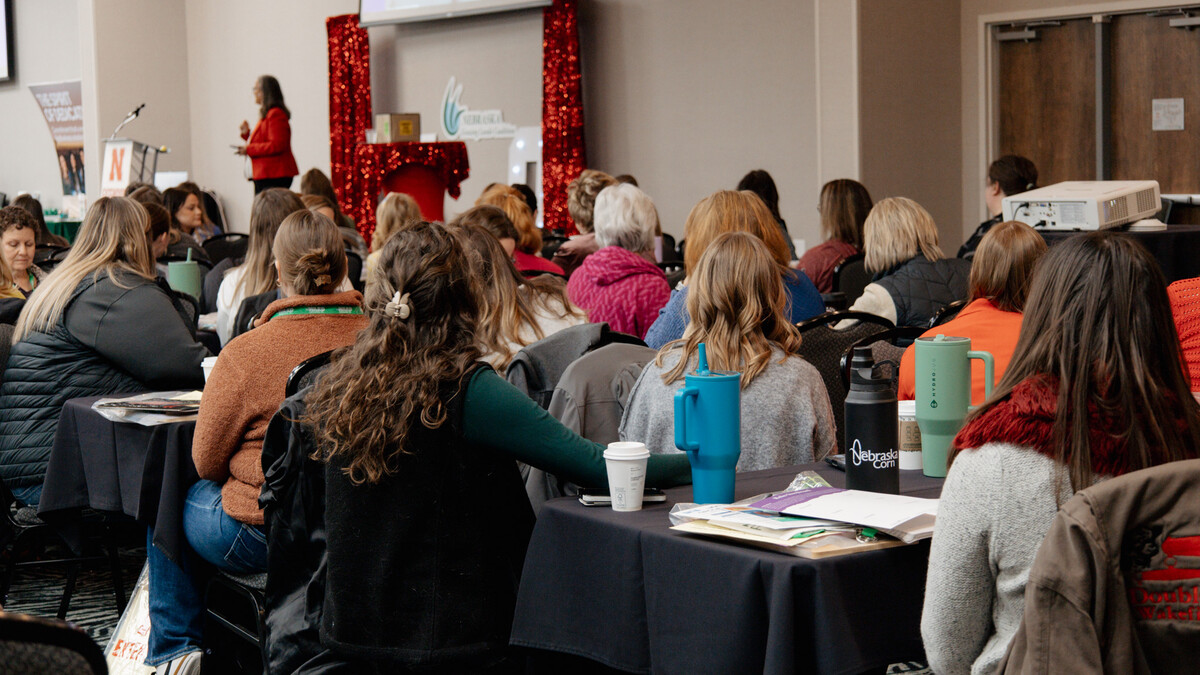
Lincoln, Neb. —Don’t think that remote sensing is a pie-in-the sky idea when it comes to modern agriculture. Sensor-supported farm management, in fact, is opening up major opportunities to help agricultural production be more efficient, environmentally sound and profitable.
University of Nebraska–Lincoln faculty members Laura Thompson and Laila Puntel made those observations during the recent national Commodity Classic event in Orlando, Florida. The UNL scientists, in collaboration with NASA, illustrated their points by explaining positive examples from Nebraska Extension’s On-Farm Research Network.
“Remote sensing can increase nitrogen fertilizer efficiency for a variety of production systems by allowing farmers to make more informed decisions about nitrogen management,” said Laura Thompson, director of the Nebraska On-Farm Research Network. “This resulted in increased profitability for farmers while decreasing negative environmental impacts.”
Laila Puntel, an assistant professor of precision agriculture and nutrient management at UNL, noted that drone imagery is now used in a significant portion of U.S. corn production but the resulting information isn’t used to its fullest to enable data-driven management decisions. Innovative research at UNL, in partnership with Nebraska producers, is showing how to achieve that progress, she said.
The live presentations by Puntel and Thompson were part of a NASA-hosted hyperwall series at the Commodity Classic, an annual national farmer-led event that this year set a record attendance exceeding 10,000 people. At the event, NASA underscored its commitment to U.S. agriculture by announcing the formation of NASA Acres, a public-private consortium in which the space agency will partner with organizations, universities and producers to “deliver NASA Earth observations into the hands of U.S. farmers.”
Puntel, in her presentation on digital farming, pointed to a Nebraska on-farm example where sensor-supported decision-making achieved a nitrogen reduction of 16 pounds per acre over traditional methods, with no difference in yield. The use of sensors is especially helpful, she said, because it strengthens a producer’s ability to adjust nitrogen application according to the varied conditions that occur across different parts of a field.
As future collaborations are achieved and capabilities are strengthened, Puntel said, “NASA and other organizations can help refine and strengthen the process to make it more precise and reliable for yield, nitrogen use and water use.” Her presentation is available online.
The space agency recently saluted UNL with a NASA Honor Award Appreciation for Excellence in Collaboration. Last summer, UNL was a key partner in NASA’s Space of Ag tour as space agency scientists visited Husker research facilities and met with producers participating in Extension’s On-Farm Research Network. NASA representatives also participated in a commodity roundtable. In November, Puntel and Thompson held follow-up meetings at NASA headquarters in Washington, D.C.
Collaborations through on-farm research are key in producing new technology solutions for farmers, Thompson said in her Commodity Classic presentation, which is available online. Involving farmers in the testing process, she said, ensures that solutions are relevant, and producers’ participation increases the chances that innovations will be adopted.
Thompson cited the example of an on-farm research project in western Nebraska in which conventional management was used in portions of a producer’s fields. In other portions, nitrogen application was determined by sensors mounted on the producer's high-clearance application equipment. The sensor-facilitated areas used 79 pounds less of nitrogen per acre than traditional management. Yield decreased slightly (1.2%), but the profit increased by $49 per acre.
This technology was also tested across a large set of fields in eastern and central Nebraska over several years. In these fields, 87% of sites had gains in nitrogen efficiency, as nitrogen use decreased by an average of 43 pounds per acre. Sixty-nine percent of the sites had increased profitability, with an average increase in profit of $51 per acre.
A second on-farm example, involving sensor-based fertigation management, also had positive results. In a large set of fields in eastern Nebraska, irrigation equipment was used to apply fertilizer as directed by sensors that monitored plants’ nitrogen levels. One grower’s results were as follows: a 98-pound decrease in nitrogen use per acre; no yield difference; and an $80 increase in profit per acre.
Over 10 sites using this approach, here were the results: All of the sites were more efficient in nitrogen use, with average nitrogen savings of 58 pounds per acre. Seventy percent of the sites were more profitable, and among these, the average profit increase was $44 per acre.
The sensors used in this on-farm research “are able to detect a lot more beyond what our eyes can see,” Thompson said. That strengthened ability to analyze field conditions enables important refinements of field management, with major benefits for producers.







